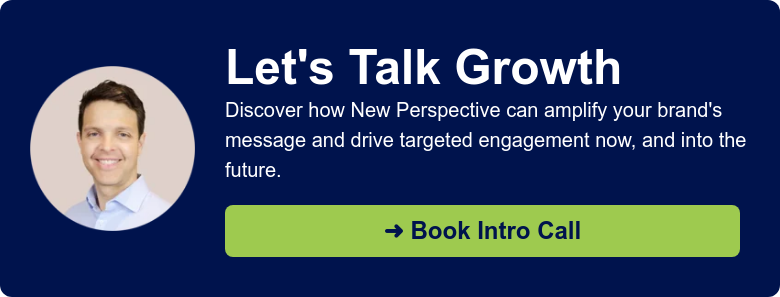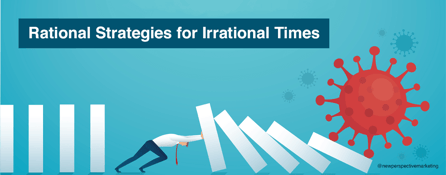How to Use PPC Advertising for B2B Lead Generation

The marketing field is an incredibly complex one, and there are so many terms to get acquainted with – so it is particularly frustrating when the jargon seems to cross over. Is retargeting the same as remarketing? And how do they both fit in with PPC advertising? It is easy to get confused, and even overwhelmed, by all the choices and terminology in today’s marketing landscape.
In this article, we will demystify the three terms – remarketing, retargeting, and PPC – and look at what the differences between them are. We’ll also explore how PPC can be used to create a stronger marketing campaign for attracting new B2B clients.
So, let’s get started!
What’s PPC Advertising?
PPC advertising is a type of online advertising that allows businesses to bid on certain keywords (the phrases people use when they’re looking for something) and then have their ads appear next to, or above, the search results. When someone clicks on your ad, you pay the amount you’ve bid – hence the name pay-per-click.
If you’ve been on the internet for any length of time, you’ll have undoubtedly come across paid search results. On Google, paid results are the ads that appear at the top and to the right of the organic search results. Why do they have front-row tickets to the SERP? Because businesses have paid to get as many eyes on their ads as possible.
You might have also seen ads lining the margins of certain websites you visit. These are known as display ads, and they work similarly to paid search results: businesses have paid for the ad space and are hoping that you’ll click on their ad and head over to their website.
This is all made possible by something called pay-per-click (PPC) advertising.
What’s Retargeting?
Retargeting is simply the process of targeting ads to people who have already interacted with your brand’s niche in some way. This can be done by placing a cookie on someone’s computer after they’ve visited your website, or by using other tracking methods like email marketing lists or Facebook Custom Audiences.
If you are an online shopper, you’ll be familiar with how this works. Perhaps you’ve been browsing the internet for a new Dyson vacuum cleaner, or for a new piece of furniture for your home. You may have even found the perfect one on a website, but then you left the page without buying it.
Later on, you may start seeing ads for that Dyson vacuum cleaner or that piece of furniture all over the internet – this is retargeting in action.
What’s Remarketing?
Have you ever visited a website and entered your details to unlock a discount code? Later that same day, you might have received an email ad for that very same website in your inbox. As you’ve shown an interest in the site, it ‘remarkets’ to you with a relevant ad to tempt you back.
The key difference to note here is that retargeting often comes in the form of PPC ads, as it’s an automated advertising process that targets people based on metadata such as their past browsing behavior.
Remarketing, on the other hand, is more commonly used for brand awareness and is usually sent as an email campaign.
So, there you have it – the key differences between PPC advertising, remarketing, and retargeting. It’s important to note that while they all have slightly different purposes, they can be used together to create an effective marketing strategy for your brand.
How to Use PPC Advertising For B2B Lead Generation
When attempting to generate leads for your B2B business, it’s crucial to note the differences between B2B and B2C customers – because this will directly impact the type of lead generation and advertising you use.
For B2C brands like clothing retailers and restaurants, impulse buys are common. Customers might see an ad for a new restaurant downtown and decide to go there for dinner that night, without doing much research in advance.
But when it comes to B2B purchases, customers typically take a lot more time before deciding to buy. They may need to consult with their team, do research online, or compare prices and features before deciding which product or service is best for their business.
This means that rather than appealing to the emotions and fishing for an instant purchase, PPC marketing for B2B should focus on providing helpful information that elevates you above the competition.
How Can PPC Advertising Benefit Your B2B Company
If B2B companies are so focused on providing information to potential customers, why are PPC ads a good strategy? There are quite a few reasons to make use of this type of advertising:
1. Target people who are already interested in what you have to offer
If you’re an accounting software company, the chances are that your customer base is browsing through a number of accounting SaaS options before making a purchase. By targeting these people with PPC ads, you can ensure that your company is at the top of their list when they’re ready to buy.
2. Don’t rely on keywords alone
Almost every market is saturated in 2022, and businesses that only rely on organic search engine optimization (SEO) to bring in leads may be disappointed. Paid search can help to fill this gap and get your company in front of people who may not have found you through traditional SEO tactics.
3. Improve your brand’s credibility
When you have adverts running at the top of search engine results pages (SERPs), it can be seen as an endorsement by Google that your company is a credible option for potential customers. B2B clients particularly like to see credibility signals like this before making a purchase.
4. Lead potential clients through a series of informative steps before they buy from you
Your ad can link to a value-packed landing page with high-conversion copy that’s designed to get the prospect interested in your product or service. Once they’re on this page, you can continue to nurture them with email marketing until they’re ready to buy.
As you can see, PPC advertising isn’t just for ‘Buy It Now!’ transactions – it can be an extremely effective way to generate leads and sales for your B2B company.
Choosing The Right PPC Advertising Campaign Platform
When embarking on your PPC strategy, the first step is choosing the right campaign platform. Let’s take a look at some of the most common PPC platforms and the differences between them.
Facebook Ads
Your clients are human, regardless of whether they are B2B or B2C. So, they’re spending time on Facebook – and that’s where your business should be too. With Facebook Ads, you can target users by their interests, demographics, and even their connections to others on Facebook.
Google Ads
Google AdWords is the most popular PPC advertising platform and allows you to place ads on Google.com and millions of other websites across the web. AdWords offers a number of targeting options, including demographics, interests, and remarketing.
At New Perspective Marketing, we are a Google Partner – meaning we have been certified by Google to manage AdWords campaigns. We also have experience with Facebook Ads and LinkedIn Ads. Using our experience and expertise, we can help you choose the right PPC platform for your business.
LinkedIn Ads
LinkedIn Ads is a great platform for targeting business professionals. You can target users by their demographics, interests, job title, and company size. LinkedIn Ads also offers retargeting for those who have already interacted with your brand on LinkedIn.
Identifying Your Target Audience for PPC Advertising
Once you’ve decided which platform to market from, your next step will be to identify your target audience. This process begins with developing customer personas, or fictionalized representations of your ideal customers based on data.
To identify your target audience for PPC, ask yourself the following questions:
- Who are my ideal customers?
- What are their demographics?
- What are their interests?
- What do they buy?
- How do they behave online?
- What targeting options are available to me?
- Which of my personas is the best fit for this campaign?
Once you have your personas, you can use them to help you select the right targeting options for your PPC campaign. For example, if one of your personas is a young woman who lives in a major city, you might want to target her with ads that are relevant to her interests and that show up in her city.
Strategies for Captivating Your PPC Advertising Campaign's Target Audience
PPC ads are short and sweet – you only have a few seconds to grab someone’s attention, and if you can’t do it in that time frame, they’re going to move on to something else. Here are a few tips for creating PPC ads that will grab people’s attention and get them to click through to your website:
- Appeal to logic, not emotions. B2B clients are more likely to make a purchase if you can prove to them that your product is the best logical choice for their needs.
- Use numbers and statistics. People love statistics, so use percentages, dollar amounts, and other numerical data in your ads to convince people that buying your product is the smart thing to do.
- Use strong, benefit-oriented headlines. Your headline is the most important part of your ad, so make sure it’s catchy and intriguing. For example, “Get twice the conversions in half the time”.
- Keep it short and sweet. The average person has a very short attention span, so keep your ad copy short and to the point. Pack a punch with proof of your value and a lead-on CTA.
There you have it – four tips for creating PPC ads that will grab your target audience’s attention and get them to click through to your website.
Monitoring Key Metrics for B2B Online Advertising
In your marketing strategy, remember that one of the most important things you can do is track the right metrics. The main metrics you’ll want to focus on are:
Click-through rate (CTR) is the percentage of people who click on your ad after seeing it. It’s a good way to measure how appealing your ad is.
Conversion rate is the percentage of people who take the desired action after clicking on your ad, such as making a purchase or signing up for a newsletter. This metric measures how effective your ad is at generating conversions.
Cost per click (CPC) is the average amount you pay each time someone clicks on your ad. By weighing this up against your conversion rate to get your cost per conversion (CPA), you can work out how profitable each click is for you.
The platform you choose to advertise on will be able to track some of these metrics for you, as they will be recorded as part of the ad campaign. However, for more detailed and accurate tracking it’s best to use a tool like Google Analytics.
PPC for B2B: Wrap-Up
PPC marketing, retargeting, and remarketing are often used interchangeably – but they each describe a vital part of a successful online advertising strategy.
In this article, we’ve endeavored to explain the differences between these three techniques and to help you decide which will work best for your business.
If you are marketing to a B2B audience, remember to emphasize informative content over product promotion in your retargeting and remarketing campaigns.
Your clients will appreciate getting the facts upfront, and you’ll be pleasantly surprised at how much easier it is to close the deal when you’re top of their minds.



